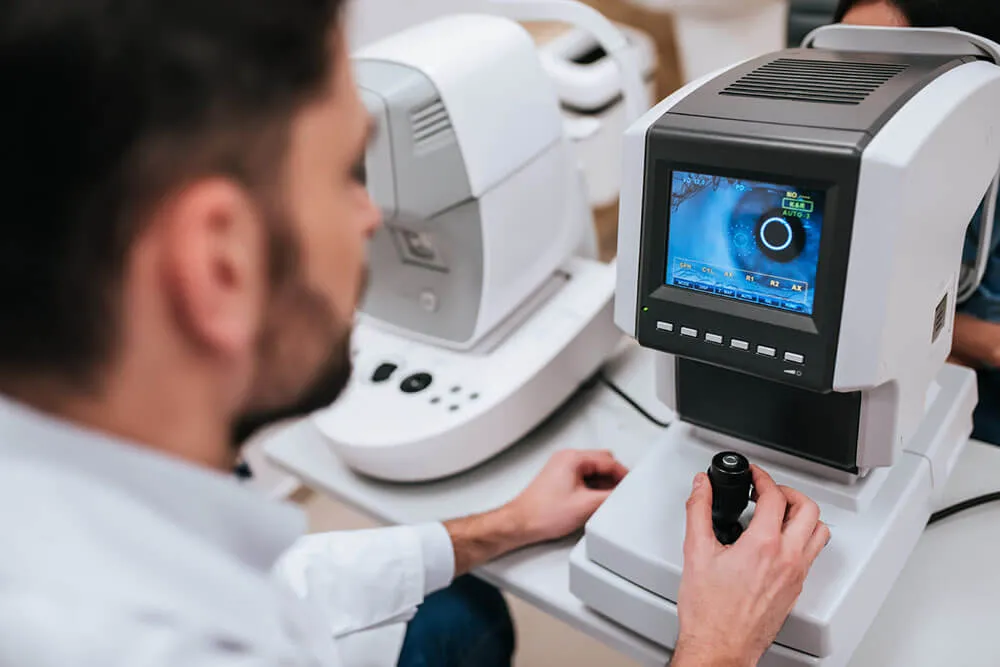Minimally Invasive Glaucoma Surgery
What Are MIGS?
MIGS stands for microinvasive (or minimally invasive) glaucoma surgery. MIGS are a family of procedures characterized by the use of microscopic-sized equipment and tiny incisions that provide an alternative to traditional, more invasive glaucoma surgical treatments. These operations have been developed in recent years with the goal of reducing some of the complications that accompany most standard glaucoma surgeries.
As outlined by the American Glaucoma Society in its position paper on MIGS, these procedures are characterized by the following:
- MIGS procedures are designed to lower interocular pressure (IOP) by improving the outflow of fluid (aqueous humor) from the eye with minimal disruption to the conjunctiva (the membrane that covers your eye) or sclera (the white part of your eye) as compared to traditional trabeculectomy or aqueous shunt surgeries.
- The device or procedure can either be approached from inside the eye (ab-interno) or outside the eye (ab-externo).
- Improving outflow may be achieved with or without an implanted device or by selectively reducing aqueous production.
- Enhancement of aqueous outflow may be through the Schlemm’s canal, the suprachoroidal space, or the subconjunctival space.
- Reduced aqueous production may be achieved through laser ablation of the ciliary processes.
Types of MIGS
MIGS can include the following:
- Ab-Internal Canaloplasty (ABiC) – A procedure developed at the Dean McGee Eye Institute (DMEI) by Dr. Mahmoud A. Khaimi that uses breakthrough microcatheter technology to enlarge the eye’s natural drainage system, improving outflow and lowering eye pressure. It restores normal fluid flow without damaging tissue or leaving behind a stent or shunt inside the eye.
- Microtrabeculectomies – This procedure utilizes tiny, microscopic-sized tubes that are inserted into the eye and drain fluid from inside the eye to underneath the conjunctiva. An example of a device used in microtrabeculectomy is the Xen Gel Stent.
- Trabecular Surgery – Most useful in early to moderate stages of glaucoma, trabecular surgery addresses the restriction to fluid drainage from the eye. Several different procedures have been developed using tiny equipment and devices to cut through the trabecular meshwork without causing any damage to other tissues in the ocular drainage pathway. Two options include bypassing the meshwork (using a device like the iStent or Hydrus Microstent) or destroying the meshwork through trabectome.
- Suprachoroidal Shunts – This procedure uses tiny tubes with very small internal openings and connects the front of the eye to the suprachoroidal space between the retina and the wall of the eye to ensure drainage of fluid from the eye.
- New Laser Procedures – Advances in laser technology have led to the development of tiny, thin lasers that can be inserted into the eye through a small incision and allow a surgeon to directly visualize the ciliary body (a structure located behind the iris) and precisely deliver laser energy to it in order to reduce the amount of fluid produced in the eye. This surgery can be performed along with cataract surgery as it uses the same incision.
Undergoing MIGS does not preclude a patient from undergoing standard glaucoma surgery if disease progression continues.
Who Is A Good Candidate for MIGS?
Patients with early-stage glaucoma or those with high IOP who do not respond to eye drops or laser treatments, or who cannot otherwise tolerate or comply with them, might be good candidates for MIGS. Patients with moderate- to severe-stage glaucoma who have other health conditions that increase the risks associated with traditional glaucoma surgery are also candidates. In addition, MIGS might be more suitable for younger patients because of the decreased downtime after surgery. MIGS can also be an option for those whose risk of vision loss from the progression of glaucoma does not justify the risks associated with standard glaucoma surgery.
Questions About MIGS?

Are There Any Risks Associated with MIGS?
Each type of MIGS has its own risks. Your surgeon will explain these risks to you. However, MIGS are often suggested because the risks they pose are less than the risks posed by traditional glaucoma surgery.
Recovery Time
Recovery time with MIGS is significantly shorter than standard glaucoma procedures, but it may be extended if the MIGS is combined with other procedures, such as a cataract surgery. Prior to your procedure, your DMEI ophthalmologist will explain what you can expect in terms of your recovery.
MIGS at Dean McGee Eye Institute
Glaucoma can be difficult to live with. The innovation of MIGS often provides a better way to address glaucoma with minimal complications. If you are in need of glaucoma treatment or diagnosis, the team at DMEI would love to care for you. Call 405.271.1093 or 800.787.9015 today to schedule an appointment or search our directory to learn more about our glaucoma surgeons.
